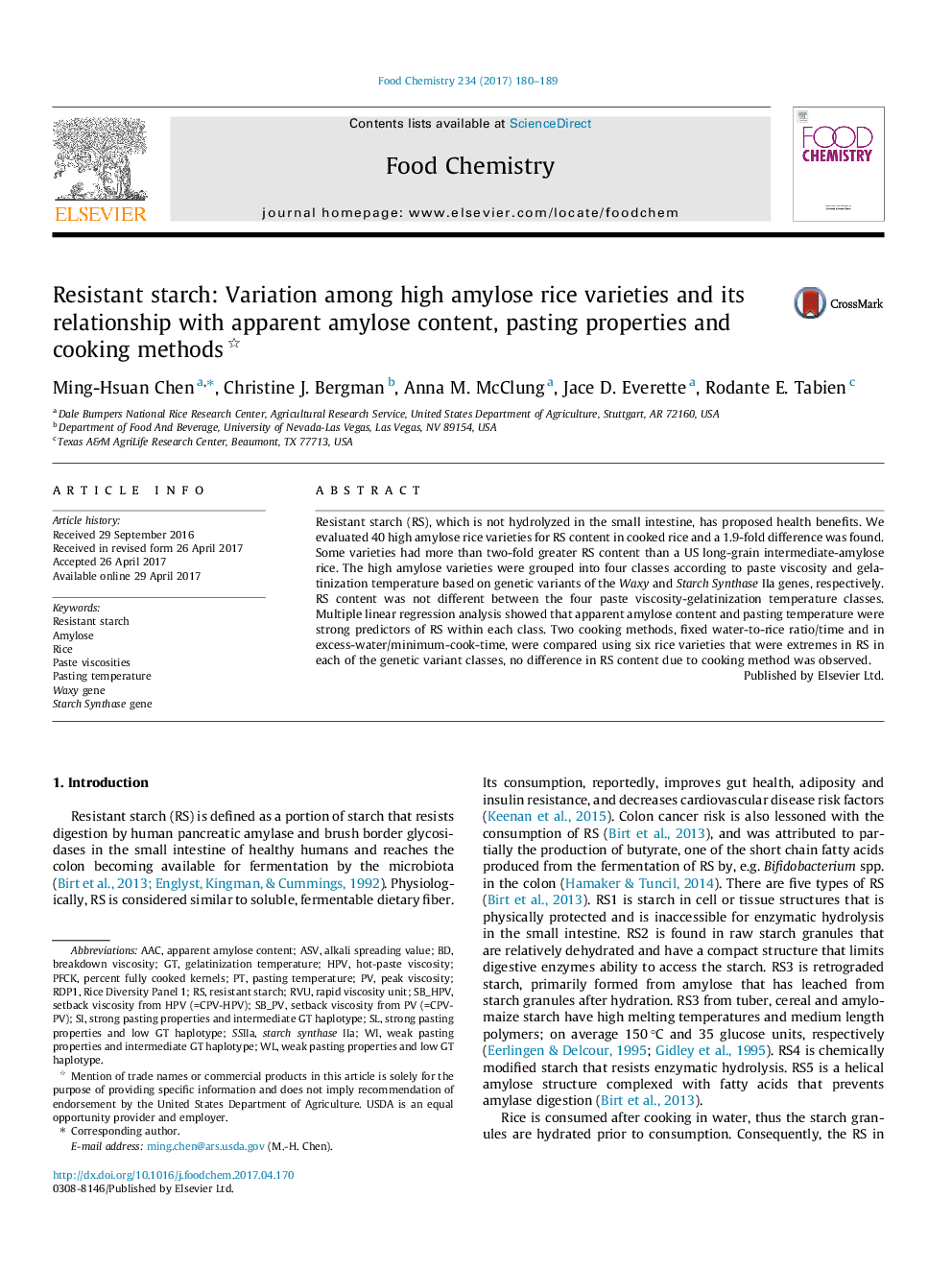| Article ID | Journal | Published Year | Pages | File Type |
|---|---|---|---|---|
| 5133128 | Food Chemistry | 2017 | 10 Pages |
â¢1.9-fold variation in resistant starch (RS) content found in 40 high amylose rice varieties.â¢Some varieties had >2-fold more RS content than typical US long grain rice.â¢Amylose and pasting temperature combined explained >76% of variation in RS content.â¢Cooking methods did not alter RS content.
Resistant starch (RS), which is not hydrolyzed in the small intestine, has proposed health benefits. We evaluated 40 high amylose rice varieties for RS content in cooked rice and a 1.9-fold difference was found. Some varieties had more than two-fold greater RS content than a US long-grain intermediate-amylose rice. The high amylose varieties were grouped into four classes according to paste viscosity and gelatinization temperature based on genetic variants of the Waxy and Starch Synthase IIa genes, respectively. RS content was not different between the four paste viscosity-gelatinization temperature classes. Multiple linear regression analysis showed that apparent amylose content and pasting temperature were strong predictors of RS within each class. Two cooking methods, fixed water-to-rice ratio/time and in excess-water/minimum-cook-time, were compared using six rice varieties that were extremes in RS in each of the genetic variant classes, no difference in RS content due to cooking method was observed.
